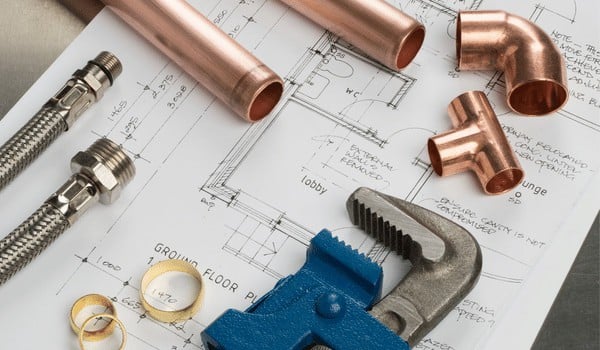If your water filter’s been quietly doing its job in the background, it’s easy to forget it’s even there — until your water pressure drops or your tap water starts tasting a little… off.
The good news? Swapping out a whole house filter isn’t nearly as intimidating as it sounds. No plumber needed. No fancy tools. Just a few basic steps, a little elbow grease, and you’re back to clean, flowing water in no time.
In this guide, we’ll walk you through everything — from spotting the signs your filter needs changing, to step-by-step instructions (plus what to do if the housing’s stuck). Whether your system treats city water or a private well, we’ve got you covered.
So grab your wrench (and maybe a towel or two), and let’s get started.
🔑 Key Takeaways
- 💡 Stuck housing? Don’t panic — there are simple tricks to loosen it without breaking anything.
- 🧰 You don’t need a plumber — changing a whole house filter is totally DIY-friendly.
- 🔄 Filters should typically be replaced every 3–12 months, depending on type and water quality.
- 🚿 Signs it’s time: reduced water pressure, strange taste, or visible sediment.
- 🔧 Basic tools include a filter wrench, Teflon tape, and silicone grease for the O-ring.
- ⚠️ Forgetting to replace your filter can lead to poor water quality, system damage, or clogs.
🔧 What You’ll Need

Before diving in, gather a few basic tools and supplies:
- Filter wrench or channel locks (depending on your housing)
- Bucket and a few towels
- Teflon tape
- Silicone grease (for the O-ring)
- Phillips screwdriver (if needed)
- Replacement cartridge
🛠️ Step-by-Step Instructions
- Turn the water back on slowly Open the main shutoff valve gradually and watch for leaks. If everything looks good, open a faucet and run it for a few minutes to flush the system.e to shoot an email over to us here at the blog. We’d love to help out in any way we can!
- Shut off the main water Locate your home’s main shutoff valve and turn it off to stop water from entering the filter system.
- Relieve system pressure Open a faucet inside your home to release built-up pressure in the pipes. Some systems also have a red pressure release button on the housing — press that too if you see it.
- Place a bucket under the housing This catches any water left inside the filter when you open it — and helps avoid a mess.
- Remove the housing Use the filter wrench or channel locks to loosen the housing. Turn it slowly — if it’s stuck, we’ll go over tips in the next section.
- Take out the old cartridge Pull out the used filter and toss it. Give the housing a quick rinse and wipe the inside clean.
- Check the O-ring Inspect the rubber O-ring. If it’s in good shape, give it a light coat of silicone grease. If it’s worn, replace it with a new one.
- Insert the new filter Drop the new cartridge into place. Some models have a small arrow for alignment — make sure it’s lined up properly.
- Tighten the housing Screw the housing back on by hand first, then snug it with the wrench. Don’t overtighten.
💧 What If You Use Well Water?
No stress — changing a whole house filter is the same whether you’re on city water or a private well. The steps don’t change.
If you’d rather see it done than read about it, we’ve got a quick video below that walks you through the steps.
🛠️ What to Do If the Filter Housing Is Stuck
Sometimes the hardest part of changing a filter is just getting the housing loose. If yours won’t budge, here’s how to break it free — without breaking a sweat.
- Double-check the water supply is off: Always start here. You don’t want any surprise sprays while working on the filter.
- Release built-up pressure: Turn on a faucet connected to your filtered water line and let it run until it slows to a trickle. This relieves pressure inside the housing.
- Close the filtered water valve: Shut off the valve that sends water to your faucets or appliances. This helps stop backflow when removing the canister.
- Look for a pressure release button: If your housing has one, press and hold it until you stop hearing a hiss. That sound is trapped pressure escaping.
- Use the right tools: With pressure relieved, grab your filter wrench or channel locks and carefully loosen the housing. Avoid over-tightening when you reinstall it — snug is good enough.
- Check the O-ring or gasket: Once removed, inspect the gasket. If it’s in good shape, a light coat of silicone grease can help it seal properly and make future filter changes easier. If it’s cracked or brittle, replace it.d use some silicone grease to spread around the gasket – this will also help it from becoming stuck in the future.
🔁 When to Change a Whole House Water Filter

There’s no universal rule for how often to change your filter — it depends on the system type, your water quality, and household usage. But here are some helpful guidelines:
- Sediment filters (pre-filters): Replace every 3–6 months
- Carbon filters: Usually last 6–12 months
- Post-filters or polishing filters: Can last up to 2 years
That said, don’t rely only on the calendar. Look out for signs your filter needs replacing:
- Drop in water pressure
- Bad taste or smell
- Visible particles or cloudiness
- Water that feels “off” on your skin
🔍 Pro Tip: If your water comes from a well or has high sediment levels, you may need to change your filters more frequently — especially pre-filters.
⚠️ What Happens If You Don’t Replace Your Filter?

Skipping filter changes might not seem like a big deal — until the problems start stacking up. Here’s what can happen if your filter stays in too long:
- Contaminants sneak through – Old filters can’t trap sediment, chlorine, or other pollutants effectively.
- Water pressure drops – A clogged filter restricts flow, which means weak showers and slow-filling sinks.
- System strain – Your filtration system has to work overtime, which can shorten its lifespan or even cause breakdowns.
- Funky taste or odor – Water that once tasted fresh might start tasting flat, earthy, or metallic.
- Appliance wear and tear – Sediment and debris can slip through and build up inside water-using appliances.
💡 Bottom line: If you stay on top of regular filter changes – your plumbing, appliances and wallet will thank you later : )
💸 How Much Does It Cost to Replace a Whole House Filter System?

If your current setup is outdated or no longer doing the job, it might be time for a full replacement. So what can you expect to spend?
- Basic sediment filter systems: $300–$500 These are the most common and often DIY-friendly — a solid upgrade for city or well water with minimal contaminants.
- High-performance systems: $500–$3000+ These often include carbon filtration, UV protection, or even reverse osmosis for whole-home coverage. They’re more expensive but offer broader protection.
🛠️ Installation Tip: If you’re handy, you can save money by doing it yourself. Otherwise, hiring a plumber can add a few hundred dollars to the total cost.
💡 Pro Tip: The “best” system isn’t always the priciest — it’s the one that fits your home’s water quality and usage. Not sure what that is? Start with a water test kit.
If I Get My Water From a Well?
🚰 What If You Get Water From a Well?
If you rely on a private well, filter maintenance is even more important. Unlike city water, there’s no municipal testing or treatment — it’s all on you.
While the process of changing a whole house filter is the same for well systems, the stakes are often higher. Well water can carry more sediment, bacteria, or heavy metals depending on your location.
✅ Choose the right filter
Look for systems specifically designed for well water. These often include sediment pre-filters, iron filters, or UV protection — and many are built to handle the extra grit.
🧪 Don’t forget to test
The CDC recommends annual testing for bacteria and nitrates. You can use a well water test kit to stay ahead of problems.
💡 Bottom line: Regular filter changes protect your water quality — and your peace of mind — no matter where it comes from.
✅ Final Thoughts
Changing your whole house water filter isn’t just a maintenance task — it’s one of the simplest ways to protect your water quality, plumbing, and appliances. Whether you’re on city water or pulling from a well, the process is nearly identical and easy enough for any homeowner to handle.
So grab your filter wrench, follow the steps, and knock it out. Your water — and your wallet — will thank you. 💧
Need help choosing a new filter? Check out our guide on whole home water filtration and for well water.
 114 people found this helpful. Was this guide helpful to you?
114 people found this helpful. Was this guide helpful to you? 

